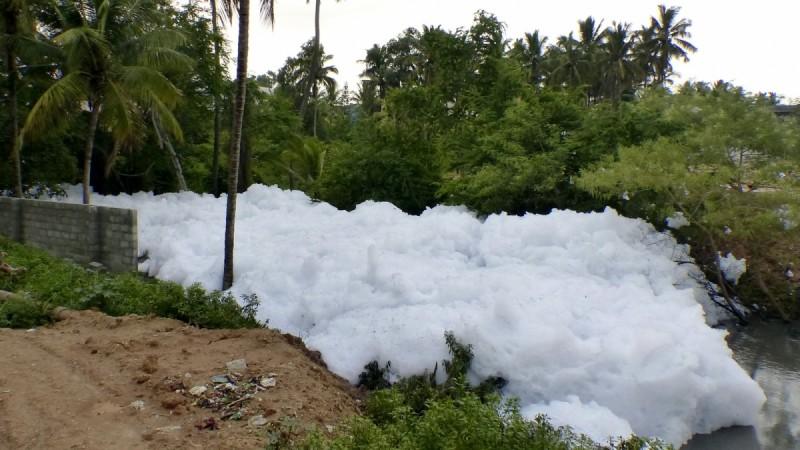
Burning of lakes have become a common phenomenon in Bengaluru but despite pushes from various civil forums, the authorities have given little importance to the issue of environmental degradation which has been continuing for over a decade. Bengaluru, which was once known to be a home of over hundreds of lakes, has the number reduced to just 34 now.
Also read: Bengaluru's burning Bellandur lake is metaphor for govt inaction
Reckless encroachment and dumping of industrial and residential wastes have choked the city's lungs but the authorities have shown little urgency to restore Bengaluru's decaying health. The fire which broke out at the Bellandur Lake on Thursday (Feb 16) evening was not the first fire at the lake nor will it be the last until the government takes action to improve the poor state of affairs. Residents around the lake blame the authorities for their lack of initiative to deal with the problems of mosquito breeding, foul smell and dumping of sewage in the waterbody.
Once a serene and green waterbody around which people took a great pleasure to walk, is now in such a shocking condition that everybody wants to give it a miss. And the story is the same for not just Bellandur but several other lakes in the city.
Here are five lakes in Bengaluru that need immediate attention:
1. Dasarahalli lake — Industrial effluents from the Peenya Industrial Area and nearby residences are get disposed in the lake. The dissolved oxygen level has gone down to less than 0.3 mg/lt, according to the Karnataka State Pollution Control Board (KSPCB).
2. Lalbagh Lake — According to the KSPCB, the lake is polluted due to sewage leakages and a large part of the lake has been taken over by weeds. The dissolved oxygen level 1mg/lt. The accepted level of dissolved oxygen in water is 4 mg/lt.
3. Ulsoor lake — In May 2016, thousands of fishes in the lake were found dead due to pollution. The storm water that drained into the lake was supposed to be filtered with nets and then passed through a granite bund. However, the maintenance became gradually poor. The storm water overflows and untreated sewage waste and garbage land in the lake.
Bengalurur: Thousands of dead fish surfaced in Ulsoor Lake - https://t.co/eb7s30EywU pic.twitter.com/7lBLZ5sNgd
— IBC World News (@Ibcworldnews) May 11, 2016
4. Jakkur lake — Once touted as the shining example of water sustainability, the constructed west land was failed as much like Ulsoor Lake as the untreated sewage water finds it way in it. Fishermen who were dependent on the lake for a livelihood are facing a lean time now.
"It's not only receiving water from the sewage treatment plant but also from an adjoining storm water drain carrying sewage. So, treatment efficiency of the wetland has gone," Priyanka Jamwal, Fellow at the ATREE Centre for Environment and Development told the Economic Times.
5. Challakere lake — In 2015, residents and an anonymous group "Friends of Lakes" had got together to clean up the lake, which was polluted with untreated sewage water, garbage and other wastes.
Borrowing from Leo Tolstoy, all cities are alike; each unhappy city is unhappy in its own way. But it is to be seen if the city wakes up to the changing landscape and makes urgent amends in the fates of its waterbodies.














